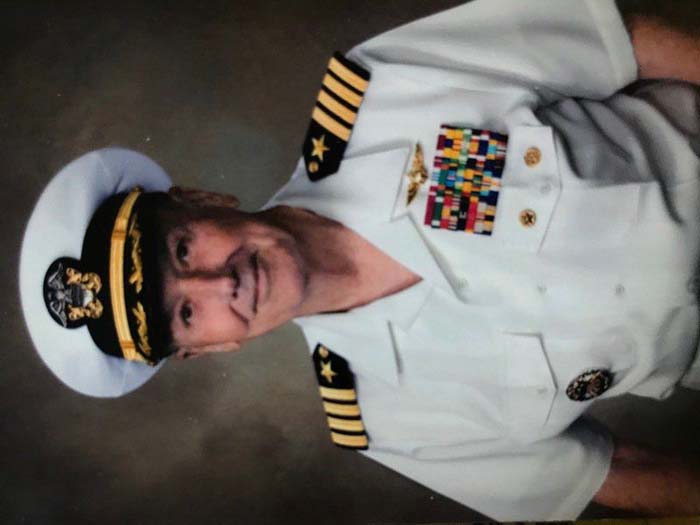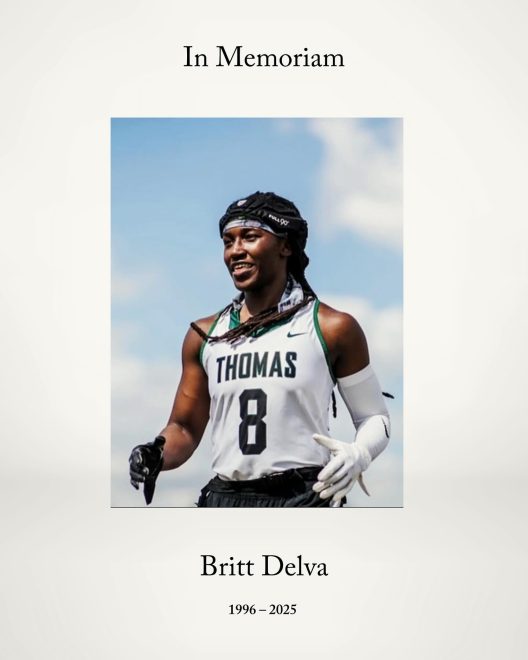Titus’ Navy career took him to Vietnam, Pentagon, back to home port
Published 12:12 pm Friday, November 10, 2017

- Submitted photoEd Titus dressed in Navy whites during naval career.
THOMASVILLE — When one encounters Thomasville’s Ed “Sonny” Titus, he or she can expect a friendly greeting and handshake from a true Southern gentleman. Inside his townhouse in the Tockwotton Historic District, everything is organized, in order and has its place. A mirror of the man.
Titus was born and raised in Thomasville and attended Thomasville High School, where he was a four-sport athlete in football, basketball, baseball and track. Upon graduation, he attended Florida State University, where he participated in football and track while obtaining a degree in business.
His interest in flying came during his sophomore year at FSU.
“Maxey Powell and I decided to go over to Moody Air Force Base and take the pilots exam and we passed,” said Titus. “I got into the Air Force ROTC at FSU, but after graduation in 1956, I went over to Pensacola, joined the Navy and went through Officers Candidate School and was commissioned an ensign.”
Receiving his wings in November 1957 in Kingsville, Texas, from Naval Air Station Kingsville, he first flew the Navy’s T-34 single-engine trainer. He was then off to Pensacola’s Corry Station, where he flew the SNJ.
“We used the SNJ there for night flying and to get our instrument rating,” he said.
Never staying in one place for very long, he received orders sending him back to Kingsville, Texas, to train in the Navy’s S2F twin-engine anti-submarine aircraft.
“My first duty station was Quonset Point Naval Air Station in North Kingstown, Rhode Island,” Titus said. “There we had to train in anti-exposure suits in case our plane went down in the cold ocean waters.” While at Quonset Point, the station was prepping for the Berlin Crisis, but they were never positioned to see action there.
His first aircraft carrier assignment was on the USS Leyte. Throughout his storied career in the Navy, Titus would record more than 6,000 flight hours and an impressive 800 carrier landings.
Weather could make flying from an aircraft carrier very challenging at times.
“I remember one night we were above the Arctic Circle, and the waves were 60 feet high, and we couldn’t fly over 300 feet because of overcast,” he said.
His career would often see him trade the seat of his airplane for a seat behind a desk. Titus said he received a call from the Navy’s Bureau of Personnel to be a three-star admiral’s aide in Norfolk.
“He was the commander of Naval Air Forces-Atlantic Fleet,” he said, “and was in charge of all the squadrons and carriers in the Atlantic, so we spent a lot of time doing carrier inspections.”
Moving back to the cockpit, he was sent to an antisubmarine squadron and then back to Pensacola to teach pilots how to land on carriers.
“We conducted FCLP (field carrier landing practice), which is a land-based area marked off the size of an aircraft carrier deck,” he added. It was a safe way for the Navy to train pilots before sending them off to land on carriers.
Titus also was in combat in Vietnam, based aboard the USS Ticonderoga.
“We stayed off the coast of Vietnam, looking for Chinese and Russian submarines,” he said, “because we had all kinds of surface ships in the area that were vulnerable to submarine attacks.”
His duffel bag did not gather dust very long, as he was off to San Diego, California, to become a commanding officer of his first unit. Titus continued his specialization in anti-submarine warfare and eventually found himself aboard the USS Kitty Hawk, a ship of which he would one day be the project manager for its overhaul. Then he was on to the Pentagon, where he was in charge of the Naval Retention Program whose goal was to keep key personnel in the Navy through various incentive programs.
After attending the Naval War College, he received orders to report to the Joint Chiefs of Staff at the Pentagon, where he wrote air and ballistic missile defense operational orders for the East Coast.
“I was then selected to be the special assistant to the chairman of the Joint Chiefs of Staff at the White House during the Carter, Ford and Reagan administrations and would prepare the briefing book for the chairman,” said Titus. “One morning I got a call at 3 a.m., that I had to get ready for an 8 a.m., briefing that morning with the National Security Council. I had to then call and wake up several admirals and tell them ‘we need this and here’s the subject.’”
Following his retirement from the Navy in 1985, he held several positions, including a stint as an organizational assessor for banks and other firms in Africa and Australia, then moving to San Francisco, where he was a sales trainer for Blue Cross of California.
While working for a four-hospital system in the Miami, Florida, area, Hurricane Andrew hit, putting more than six feet of water in his home.
“I lost everything and even had a giant oak tree fall across my house,” Titus said.
Moving to Thomasville six months after the hurricane, he went to work at Thomas University as a professor of business management and psychology and finished his working life as a psychology professor at Troy University’s Albany campus. He eventually received two master’s degrees and a Ph.D., and graduate from the Executive Development Programs from Harvard University, University of Michigan and Columbia University.
Ed Titus has spent his life getting an education and later educating others. These days he can be found walking three days a week, working out at the YMCA, attending weekly Rotary Club meetings and having coffee four days a week with a group of veterans. His military career sent him all over the world, the Pentagon, The White House and eventually into the classroom. But this retired Navy veteran has thrown out his anchor in Thomasville and is enjoying this port of call.





